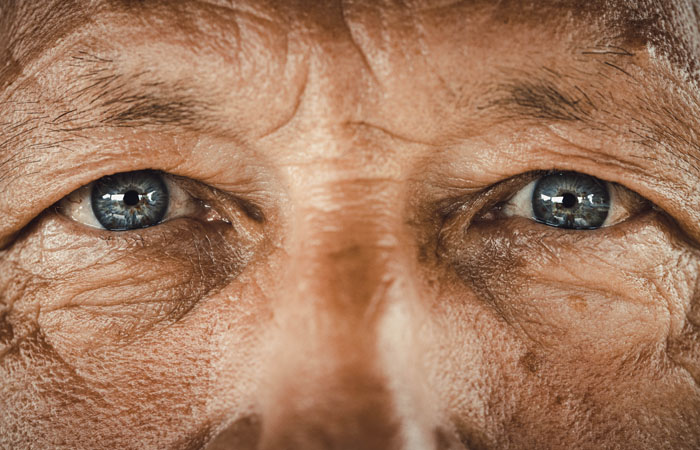Focusing on eye care
In Conditions
Follow this topic
Bookmark
Record learning outcomes
Irreversible damage to sight can be stopped in its tracks, but only if people keep an eye on things, and pharmacy teams can help
Taking a look at something with a fresh pair of eyes can often be helpful, but in reality people only have the one set for life. It’s therefore vital to understand the importance of eye health, especially as once sight is lost, it often cannot be restored.

In the UK, an estimated six million people are living with sight-threatening eye conditions, according to the 2018/19 annual report published by the Royal National Institute of Blind People (RNIB). In addition, a staggering 50 per cent of all cases of sight loss are avoidable, so how can pharmacy help?
Encouraging customers to attend regular eye tests every two years is a start and this is especially important right now as many appointments have been disrupted by the Covid-19 pandemic. Many people may also be too afraid to attend appointments, but the RNIB is urging anyone who has eye issues to do so. “If you suddenly notice a change in your vision, seek help from an optometrist the same day. Do not leave it and hope it will get better,” says Louise Gow, specialist eye health lead at the RNIB. Spotting signs early can help prevent potentially irreversible issues, especially with serious conditions like age-related macular degeneration (AMD) and glaucoma.
Pharmacy teams can also help with minor eye conditions with over-the-counter (OTC) recommendations and self care advice. Louise adds that the promotion of healthy lifestyle messages can also mean fewer people will develop avoidable sight loss.
Visualising care
Let’s start with the basics: common eye conditions can be a nuisance, but usually clear up on their own. Pharmacy teams can help customers spot the signs and prevent treatable issues worsening.
- Dry eye
Dry eye occurs when the eyes do not make enough tears or when tears evaporate too quickly. The condition is common in people aged over 50 because the eyelids become less effective at spreading tears across the eyes as people age. But wearing contact lenses, looking at screens for too long, air-conditioned rooms, smoking, drinking alcohol and even other eye conditions such as blepharitis, can also cause dry eye.
The eyes can feel itchy, sore and gritty, as well as looking red and being sensitive to light and being watery. Ironically, watery eyes can cause dry eye because the water in tears dilutes the oil in tears, reducing their ability to lubricate the eye.
Pharmacy teams can recommend lubricating eye drops or gels and an eyelid spray to help replenish the oil within tears, if necessary. In addition, customers should take regular screen breaks, ensure they get plenty of sleep, avoid smoking and limit alcohol intake.
- Conjunctivitis
Conjunctivitis is the inflammation of the eye’s conjunctiva due to an infection, allergy or irritant. All forms of conjunctivitis should clear up within a couple of weeks without treatment, but there are steps that can be taken to ease symptoms.
Infective conjunctivitis is caused by a bacterial or viral infection. This contagious condition and can affect one or both of the eyes, which will appear bloodshot and itchy. The eye will also produce the typical discharge associated with conjunctivitis, which is usually yellow or green and causes the eyelashes to stick together.
Pharmacy teams can advise customers tackle this with eye baths. Using a cotton pad – one for each eye – and warm water, they should gently rub the eyelashes to clean them, soaking off the discharge. To stop the spread of infection, they should wash their hands frequently and avoid sharing towels and pillows, which should also be washed regularly. In severe cases, the pharmacist may refer the customer to a GP for a prescription
of antibiotics.
Unlike infective conjunctivitis, the irritant and allergic forms of the condition are not usually contagious. Allergic conjunctivitis usually affects both eyes and makes them red and watery. It is caused by an allergy to substances such as pollen or mould spores. The allergen should be avoided as best as possible and antihistamines can help to relieve symptoms.
Irritant conjunctivitis is caused by something irritating the eye such as smoke, shampoo, dirt or even an eyelash and this should be removed, if possible. Lubricating eye drops and bathing the eyes can help with both the allergic and irritant conjunvtivitis.
If the customer wears contact lenses and/or eye makeup, they should be advised to avoid them until symptoms have cleared up completely.
50 per cent of all cases of sight loss are avoidable
- Blepharitis
When the eyelids become inflamed with blepharitis, they will appear red, puffy and sore as the glands in the eyelids are blocked. It is usually caused by an infection, allergy or skin condition such as rosacea or seborrhoeic dermatitis.
Blepharitis is an early riser as it is usually worse in the morning and both eyes are often infected. Customers may also wake with eyelids that stick together, irritated or burning eyes, or small ulcers or styes in severe cases.
Blepharitis is a chronic condition that can develop at any age, but is common in people aged over 50. Although it cannot be cured, pharmacy teams can help customers prevent flare-ups and manage symptoms by suggesting a warm compress to help clean the eyes and unblock eyelid glands. Both eyes need their own clean compress, which should be held to the area for five minutes. Pharmacy teams can also recommend lubricating drops and suggest customers avoid smoky air and wearing eye makeup.

- Styes
A stye is a painful red lump on the eyelid. Styes occur when an eyelid gland or eyelash follicle gets infected and a pus filled lump appears, usually on one eye. They often burst on their own within three to four days.
Styes can be treated with a warm compress, which should be held against the lump for five to 10 minutes, three to four times a day. This will help the stye to burst. Styes can sometimes have the appearance of a spot with a yellow head, but pharmacy teams should advise customers not to squeeze the stye, as this can spread infection.
Customers who wear makeup or use contact lenses should avoid these until the stye has cleared. If a stye is affecting vision or lasts longer than two to three weeks, the customer should be referred to a GP.
- Digital eye strain
The eye condition of the modern age, digital eye strain is characterised by the discomfort, headaches, soreness, itchiness, watery and dry eyes; blurred or double vision; and increased sensitivity to light that can result from looking at phone or computer screens for long periods of time.
“This is a combination of dry, irritated and sore eyes, which can also cause blurring, but is temporary in that when you have had a rest, the symptoms settle down again,” says Louise. “The 20:20:20 rule is key to using computers without causing eye symptoms. You should take a break every 20 minutes, looking at least 20 metres away for at least 20 seconds. It is also important to keep your spectacles up to date so that you are not having to squint at the screen.”
With many people still working from home, it is pertinent for pharmacy teams to inform customers how to optimise their workspace to help keep the eyes healthy. There should be adequate room lighting and the computer should be 20-24 inches from the eyes, with the centre of the screen 10-15 degrees below the eye line.

Eyeballing diet
Many people may not be aware that diet can affect their eyesight. For example, a diet high in salt can make the eyes become puffy, as salt causes the body to retain fluid.
A varied and balanced diet can have many benefits for eye health. “Making sure that diet includes nutrients such as omega-3 fatty acids, zinc and vitamins C and E may help to slow progress of age-related vision problems such as macular degeneration,” says Neha Issar-Brown, director of research, policy and innovation at charity Fight for Sight. “Recommended foods for general good health include green leafy vegetables, oily fish such as salmon and citrus fruits.”
Alcohol can also make the eyes puffy, as well as irritated and bloodshot. Long-term alcohol abuse can also permanently damage the optic nerve. “People who have a combination of poor diet and heavy drinking over a long period are most at risk,” says Louise Gow, specialist eye health lead at the Royal National Institute of Blind People (RNIB).
Serious sights
Pharmacy teams should make customers aware that even if their vision appears to be fine, some serious conditions do not display symptoms until there has been irreversible sight damage. Therefore, the number one recommended piece of advice to pass onto customers to protect their eye health is regular eye tests.
- Age-related macular degeneration (AMD)
AMD is the biggest cause of sight loss in the UK, affecting approximately 600,000 people, and mainly impacting those over the age of 50. In fact, one in every 200 people over 60 is thought to have AMD.
The condition can cause dark spots to appear and make vision blurry and distorted. Two common forms of the condition are wet and dry:
- Wet AMD is caused by abnormal blood vessels growing at the back of the eye. This is less common than dry AMD, but worsens at a faster rate. Treatment is available for wet AMD, which involves regular eye injections using anti-vascular endothelial growth factor (VEGF) drugs and a form of light treatment called photodynamic therapy. This can prevent vision from worsening, but will not restore sight
- Dry AMD occurs due to a build up of drusen – deposits of a fatty protein building up at the back of the eyes. This form of AMD gets increasingly worse at a gradual pace. It is common and unfortunately there is currently no form of treatment.
But pharmacy teams can reassure customers that AMD does not cause complete sight loss. They can also encourage them to get regular eye tests, which are imperative in preventing AMD from causing further damage. “Invariably, with macular degeneration you cannot restore the lost vision. If you treat it early enough then the very early signs of distortion may be corrected by the removal of the fluid from the retina, but if it is there for any length of time, it will start to scar the macular and that causes irreversible sight loss. The sooner a person is treated, the better their vision will remain in the long term,” says Cathy Yelf, chief executive of the Macular Society.
As a result of the Covid-19 pandemic, there has been an over 70 per cent reduction in new referrals for AMD and a 25 per cent reduction in the number of patients with known AMD attending appointments for sight-saving treatment, according to the Macular Society. This highlights the opportunity for pharmacy teams to encourage customers to get checked out if they notice any changes in their vision and ensure they attend their appointments if they have already got them booked in.
To prevent or slow down the progression of AMD, customers should eat a healthy and balanced diet, exercise and quit smoking – smokers are four times as likely to develop the condition. “Smoking is the single most important modifiable risk factor for AMD and therefore smoking cessation advice is very important as lots of people know smoking causes cancer, but they don’t realise smoking causes sight loss,” says Cathy. Read more about smoking cessation and smoking statistics.
Smoking is the single most important modifiable risk factor for AMD
- Cataracts
Cataracts are often associated with ageing, but can be due to a family history of the condition, diabetes, smoking, alcohol misuse or eye injury. Cloudy patches appear on the lens of the eye and these grow slowly, making vision blurry and the eyes sensitive to light, eventually causing blindness. This condition usually affects both eyes, but not necessarily at the same time.
Some steps can be taken to delay the condition, including wearing sunglasses to protect the eyes from the sun, quitting smoking and eating a healthy and well balanced diet. People over 60 should also be encouraged to get a dilated eye exam, which involves widening the pupil to check for conditions that cause vision loss. Eye surgery to replace the clouded lens is the only option to treat cataracts.
- Glaucoma
Approximately 60 million people worldwide have glaucoma, making it the second leading cause of blindness in the world after cataracts. The disease causes vision loss and blindness, but early treatment can prevent further damage to sight. There is currently no cure and this condition is often an example of ‘too little too late’ with regards to treatment. “Many eye conditions can be prevented if detected and treated early. One prominent example is glaucoma, which is the name for a group of eye conditions that cause sight loss because of damage to the optic nerve – the nerve that connects the eyes to the brain. Damage to the optic nerve can’t be reversed, but early detection can prevent further deterioration,” says Neha Issar-Brown, director of research, policy and innovation at charity Fight for Sight.
Symptoms such as blurred vision do not usually show initially, and tend to develop slowly, so an eye test is crucial for diagnosis. A dilated eye exam can help spot the signs of glaucoma and should be recommended, especially to the over-60 age group.
Eye drops are the most common form of treatment, which help to lower the pressure in the eye. Laser eye treatment and surgery are also options.
Focus on National Eye Health Week
This year’s National Eye Health Week (NEHW) takes place from 21-27 September 2020. It aims to encourage everyone to be ‘eye aware‘ and centres around a call to action for people to contact an optician if they notice a change to their vision or have any concerns about their eye health.
Through the awareness week, the charity Eye Health UK highlights the importance of good eye health, as well as 10 Best Eye Health Habits. These include: eating a healthy and balanced diet, not smoking, managing weight and wearing sunglasses to protect the eyes from UV damage.
A perfect opportunity for pharmacy teams to get involved in raising awareness of the importance of eye health, NEHW can also help in initiating conversations with customers on this topic during this week and beyond. Free online resources, including posters and leaflets on common conditions are now available.
